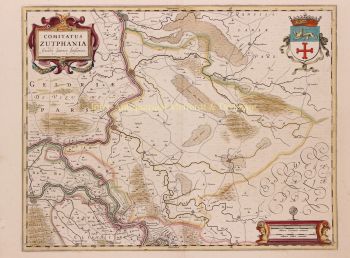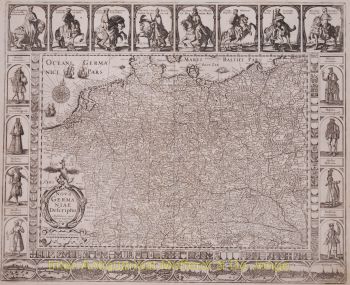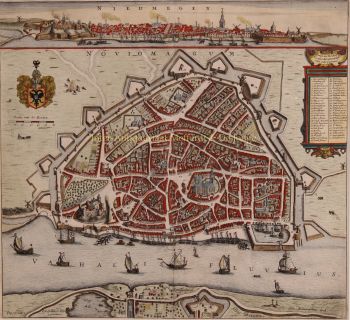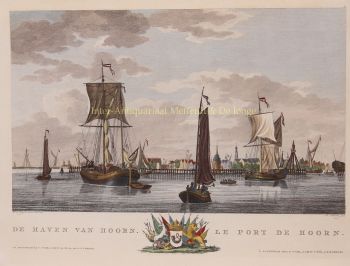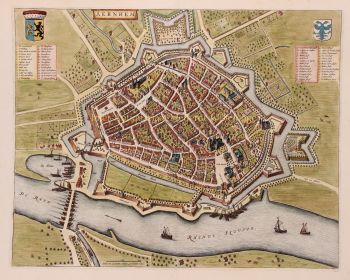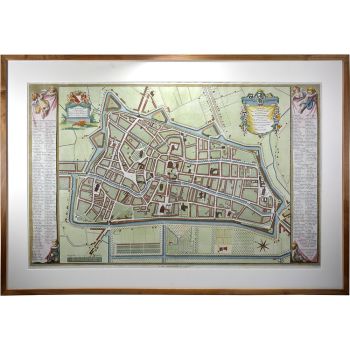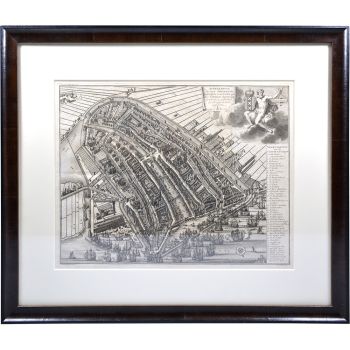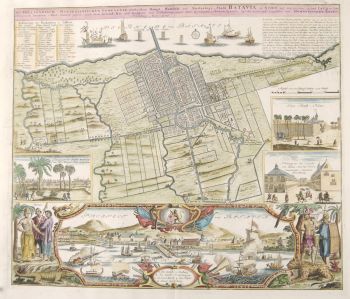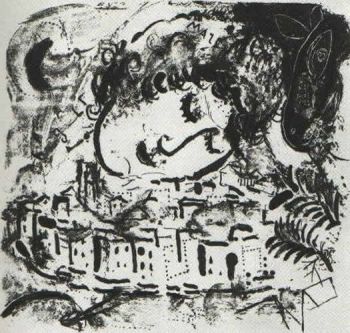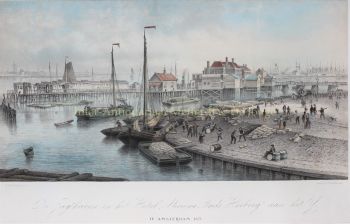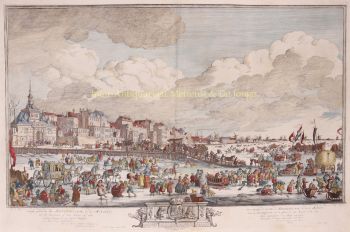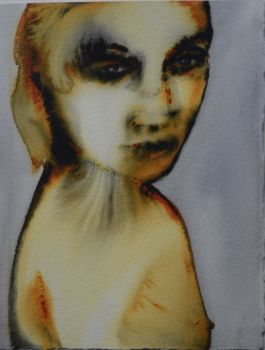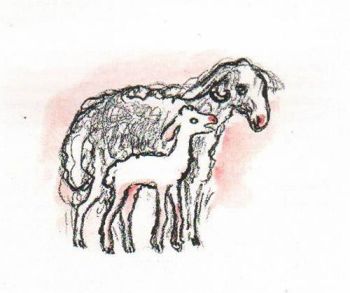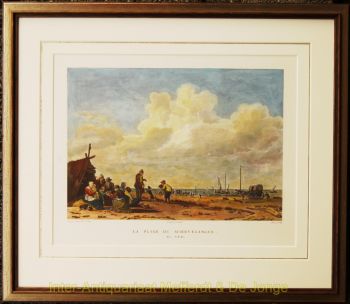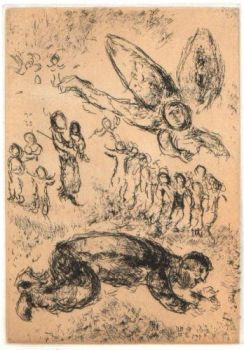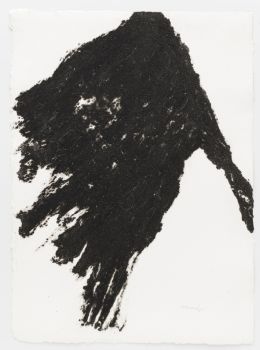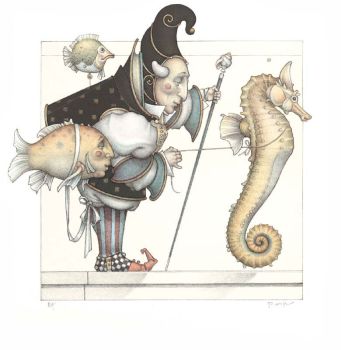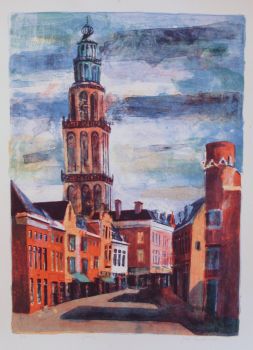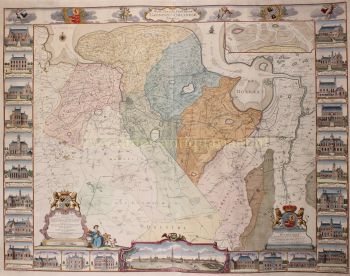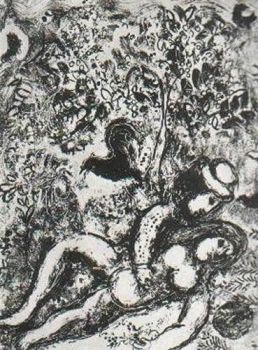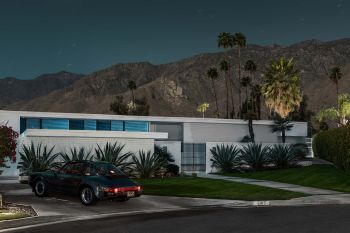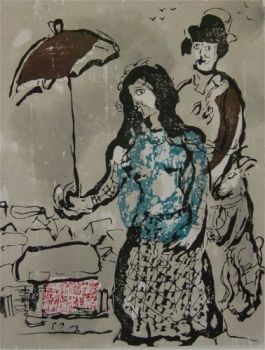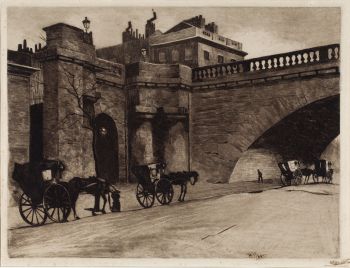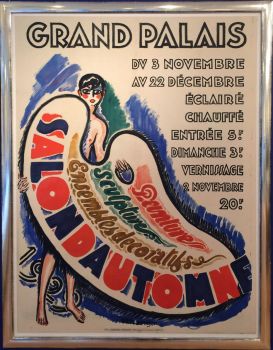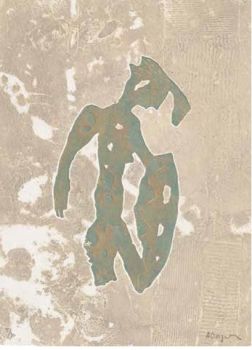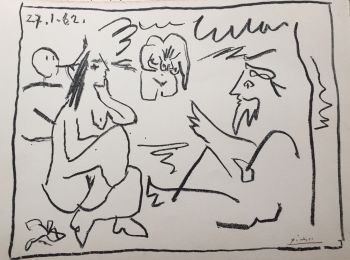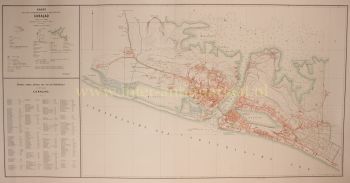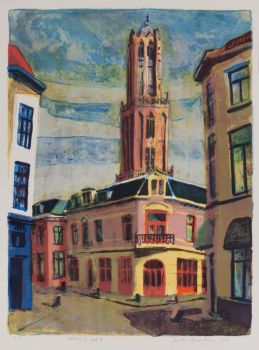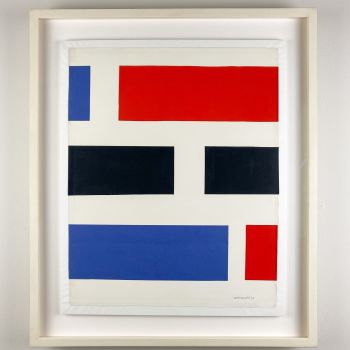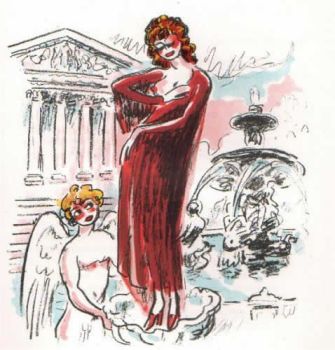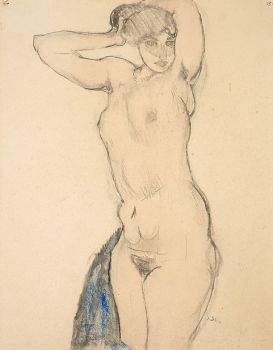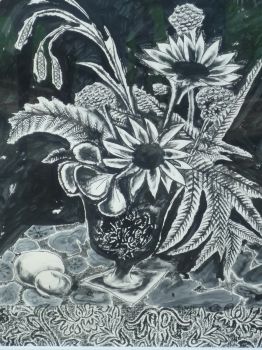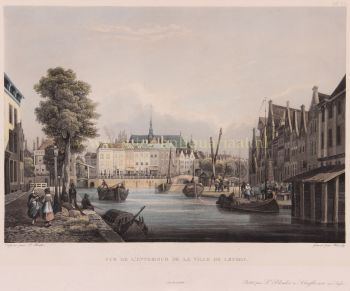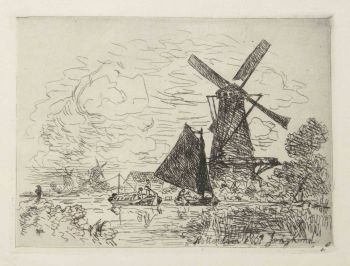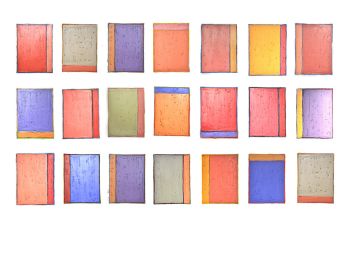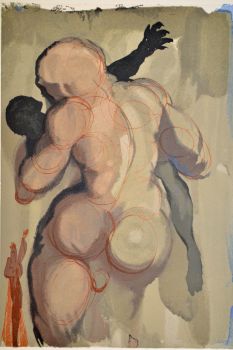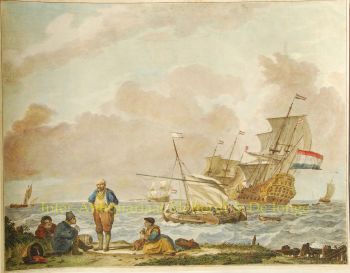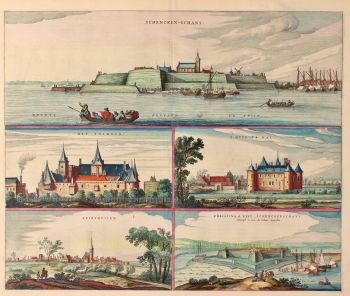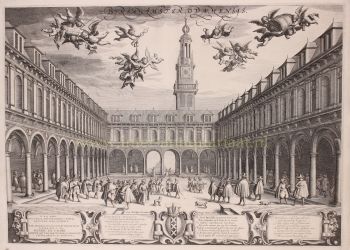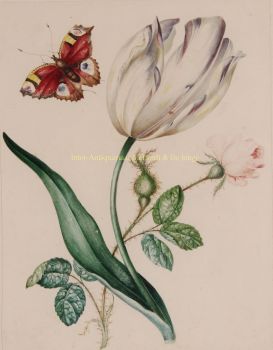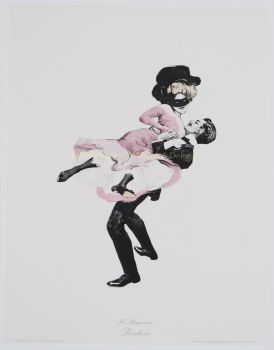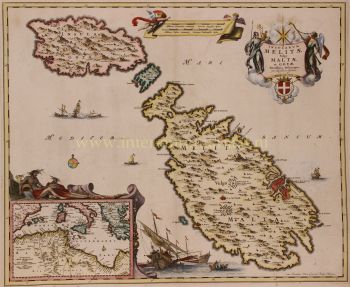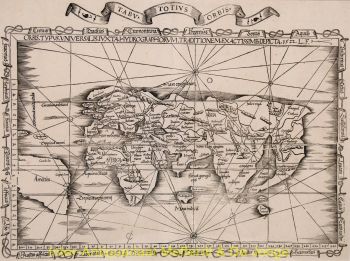Groningen 1690
Johannes Janssonius
Inter-Antiquariaat Mefferdt & De Jonge
- A proposito di opere d'arteSTAD GRONINGEN IN DE 17E-EEUW "Groeninga vulgo Groeningen", kopergravure van van Groningen vervaardigd in opdracht van Johannes Janssonius rond 1657, hier in een ongewijzigde uitgave van ca. 1690 door Gregorio Leti. Later met de hand gekleurd. Afm.: 41,5x51cm. Janssonius verwerft 363 koperen platen van de Keulse uitgevers Georg Braun en Franz Hogenberg en besluit daarmee in 1657 zelf een stedenboek te maken. De koperen platen werden herzien, aangepast en deels geheel nieuw vervaardigd, hij gebruikte daarbij topografische voorbeelden van Matthäus Merian, Jodocus Hondius II en van zijn Amsterdamse concurrent Joan Blaeu. Het resultaat was een indrukwekkend boek in 8 delen met daarin ruim 500 afbeeldingen van steden van de wereld. De meeste platen werden niet gesigneerd. Deze kaart van Groningen is gebaseerd op een kaart uit 1637 van Egbert Haubois, die de opdracht had gekregen de grote stadsuitleg van 1615-1624 in beeld te brengen. Gregorio Leti (1630–1701) was geschiedschrijver en satiricus, geboren in Milaan en later geëmigreerd naar Engeland. Hij schreef voor Charles II een geschiedenis van Engeland, maar vluchtte 1685 naar Amsterdam vanwege het beledigen van zijn opdrachtgever. In Holland werkte hij aan zijn “Teatro Belgico”, een boek over de geschiedenis van de Zeven Provinciën. Prijs: Euro 1.250,-
- A proposito di opere artista
Janssonius è nato ad Arnhem come figlio di Jan Jansz, tipografo ed editore locale. In giovane età si trasferì ad Amsterdam, l'allora centro della stampa e del commercio di carte. Nel 1612 sposò Elisabeth Hondius, figlia di Jodocus Hondius. Elisabeth morì nel 1627 e Janssonius si risposò nel 1629 con Elisabeth Carlier. Andò a lavorare per suo suocero e continuò l'attività editoriale insieme a Henricus Hondius (figlio di) dopo la sua morte. Questo è stato sviluppato in uno dei più grandi del suo tempo. C'erano filiali a Berlino, Francoforte, Ginevra, Lione e Stoccolma, tra gli altri.
Sotto la guida di Janssonius, il Mercator-Hondius Atlas fu ampliato e pubblicato come Atlas Novus. Questa edizione inizialmente monovolume si trasformò ben presto in un atlante in più volumi, integrato su richiesta con carte nautiche e/o carte celesti. C'erano pubblicazioni in olandese, francese, spagnolo e latino. Come i suoi contemporanei, anche Janssonius fece uso di lastre di rame esistenti, tra cui quelle dei libri cittadini di Braun & Hogenberg e la Description de touts les Pays Bas (Descrizione di tutti i Paesi Bassi) di Lodovico Guicciardini - (edizione Cornelis Claesz.) da 1609 Sebbene Janssonius sia stato spesso accusato di aver copiato il lavoro di Willem Blaeu, si può notare che anche le mappe di Janssonius sono apparse sul mercato prima.
Dopo la morte di Janssonius, l'azienda fu portata avanti da suo genero, Johannes (Jan) van Waesbergen, che sposò sua figlia Elisabeth Janssonius (1615-1681). Molte lastre di rame dei libri cittadini furono utilizzate (a volte leggermente modificate) da Frederik de Wit. L'edificio in piazza Dam è stato affittato a Gerard Valck; Ha anche acquistato una serie di lastre da stampa nel 1694.
Sei interessato ad acquistare questa opera d'arte?
Artwork details
Related artworks
- 1 - 4 / 4
- 1 - 4 / 24
- 1 - 4 / 7
Willem Witsen
Waiting carriages in front of Waterloo Bridge1850 - 1900
Prezzo su richiestaKunsthandel Pygmalion
Rene Rietmeyer
"Japan, Tokyo, Kudan House" 20212021
Prezzo su richiestaEuropean Cultural Centre Collection
1 - 4 / 24- 1 - 4 / 12




